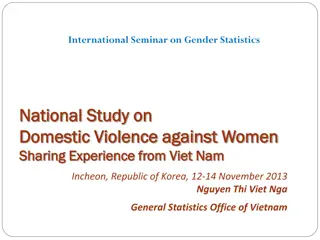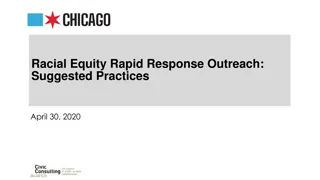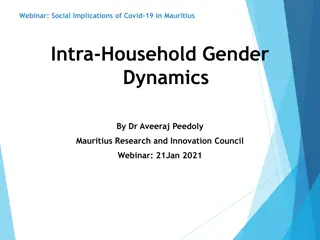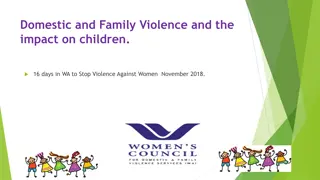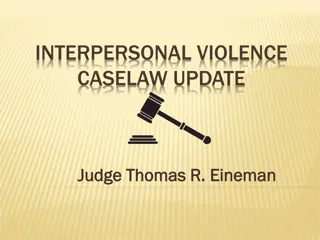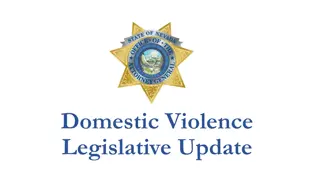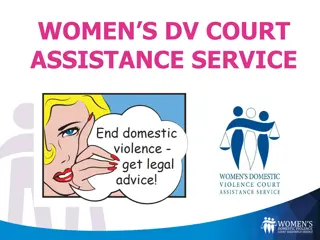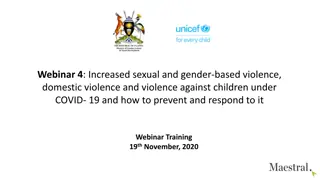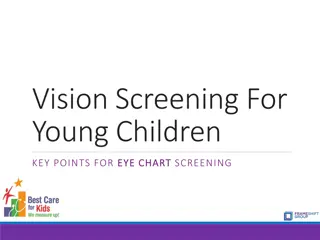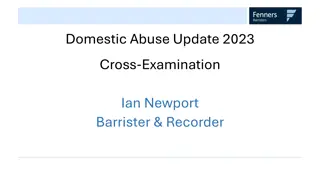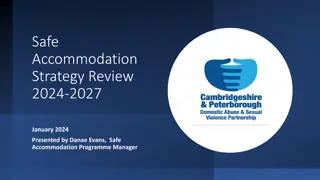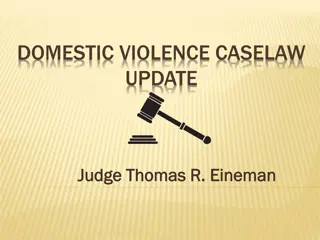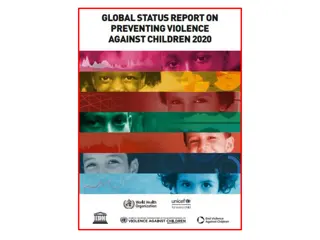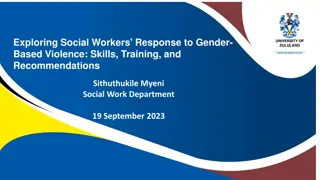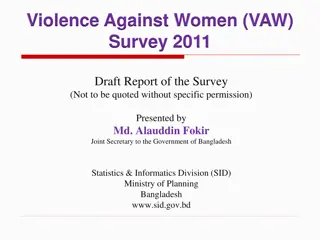Best Practices in APN Education for Domestic Violence Screening
This presentation discusses the current practices of Advanced Practice Nurses (APNs) in screening for intimate partner violence (IPV), highlighting the importance of proper education and training. It provides insights into evidence-based screening guidelines, specialty distribution of APN practices, and screening tools recommended by the US Preventive Services Task Force. The content emphasizes the need for improved training for healthcare providers to effectively address domestic violence issues.
Download Presentation

Please find below an Image/Link to download the presentation.
The content on the website is provided AS IS for your information and personal use only. It may not be sold, licensed, or shared on other websites without obtaining consent from the author. Download presentation by click this link. If you encounter any issues during the download, it is possible that the publisher has removed the file from their server.
E N D
Presentation Transcript
Best Practice in APN Education for Domestic Violence Screening Expectations and Opportunity for Change Beth Knox DNP APN AOCN October 13, 2016
Current APN Practice of Screening for IPV
APN Practice by Specialty n=245 Primary Care Internal Medicine 11.8% (29) Family Practice Other Specialties 17.6% (43) 21.2% (52) 49.3% (121)
Evidence-Based Screening Guidelines for Domestic Violence U.S. Preventive Services Task Force (USPSTF, 2013) o Screen women of childbearing age ( 14-46) o Plan for support and safety o Screening tools Patient Protection and Affordable Care Act (USDHHS,2014) o Incorporates USPSTF Guidelines for Screening Women for IPV o New Jersey enrollment o Screening tools
USPSTF Recommendations Screening Tools HARK HITS ( English & Spanish) CTQ-SF OVAT STaT WAST USPSTF, 2013
HARK Within the past year have you been: Humiliated Afraid Raped * Kicked Basile, Hertz, Back, 2007
HITS How often does your partner ? Physically hurt you Insult or talk down to you Threaten you with harm Scream or curse at you Sherin et al., 1998
Woman Abuse Screening Tool (WAST) Questions focus on - Description of patient-partner relationship Patient partner ability to work through arguments Arguments with partner resulting in feelings of depression Arguments that lead to hitting, kicking or pushing Frightened by partners words or actions Direct question about partner physical abuse Direct question about partner causing emotional abuse Direct question about sexual abuse by partner Basile, Hertz, Back, 2007
Voices of Survivors Let Me See Tomorrow Interviews with 11 survivors Recommendations o Healthcare provider (HCP) training in domestic violence o Ask about domestic violence in a confidential manner o Ask in a private area away from the abuser o HCPs should display domestic violence information and educational materials in their offices.
Safety Plans #1 goal : Offer a plan of safety and support o Call 911 if you are in immediate danger. o Prepare and emergency kit for a situation where you have to leave suddenly. o Develop a plan of safety with your children. Include people they can call in an emergency, including 911. o Talk to your healthcare provider, who can provide you with a private phone call for help. Futures Without Violence, 2014
New Jersey Resources for Domestic Violence The New Jersey Coalition to End Domestic Violence is a statewide association that provides leadership, support and resources on the prevention of domestic violence in New Jersey through advocacy, training, public awareness and research. http://www.njcedv.org / http://www.nj.gov/dcf/women/
State of New Jersey Dept. of Children and Families Brochures and Posters http://www.nj.gov/dcf/women/
Violence New Jersey Division on Women State of New Jersey Department of Community Affairs (2011).
National Resources Futures Without Violence 2016; American College of Obstetrics and Gynecology, 2016
Lets Get Started! Futures Without Violence, 2016 . Retrieved from https://www.youtube.com/results?search_query=Futures+without+ violence
Futures Without Violence Safety Card Montage YouTube Video https://www.youtube.com/watch?v=usUlD8j2VXo &index=15&list=PLaS4Etq3IFrWgqgcKstcBwNiP_j8 ZoBYK
Become the IPV Champion Always be prepared!
References American Congress of Obstetricians and Gynecologists( ACOG) ( 2012, February). Committee Opinion: Committee on health care for underserved women. (Issue Brief No 518). Retrieved fromhttp://www.acog.org/Resources-And- Publications/Committee- Opinions/Committee-on-Health-Care-for- Underserved-Women/Intimate-Partner- Violence. Basile KC, Hertz MF, Back SE. Intimate Partner Violence and Sexual Violence Victimization Assessment Instruments for Use in Healthcare Settings: Version 1. Atlanta (GA): Centers for Disease Control and Prevention, National Center for Injury Prevention and Control; 2007. Nelson, H.D., Bougatsos, C., & Blazina, I. (2012). Screening women for intimate partner violence: A systematic review to update the U.S. Preventive Services Task Force recommendation. Annals of Internal Medicine, 156(11), 796- w-282. Retrieved from: http://annals.org New Jersey Department of Children and Families (2016). Finding safety & support. Retrieved from http://www.nj.gov/dcf/news/publications/domesticviolence.html
New Jersey Division on Women State of New Jersey Department of Community Affairs (2011). New Jersey resource guide for women: Section VII domestic violence. Retrieved from http://www.nj.gov/dcf/women/resources/pdfs/section_vii_domesticviolence2011.pdf New Jersey Domestic Violence Fatality and Near Fatality Review Board (2010). Let me see tomorrow A report based on interviews with women who were nearly killed by their intimate partners. Retrieved from http://www.nj.gov/dcf/news/reportsnewsletters/taskforce/LetMeSeeTomorrowOct20 10.pdf Patient Protection and Affordable Care Act (ACA) (2010). Retrieved fromhttp://www.gpo.gov/fdsys/pkg/PLAW-111publ148/pdf/PLAW-111publ148.pdf Sherin, K. M., Sinacore, J. M., Li, X. Q., Zitter, R. E., & Shakil, A. (1998). HITS: a short domestic violence screening tool for use in a family practice setting. Family Medicine, 30(7), 508-512. U.S. Preventative Services Task Force (USPSTF) (2013). Screening for intimate partner violence and abuse of elderly and vulnerable adults: U.S. Preventative services task force recommendation statement. Retrieved from : http://www.uspreventiveservicestaskforce.org/uspstf12/ipvelder/ipvelderfinalrs.htm





